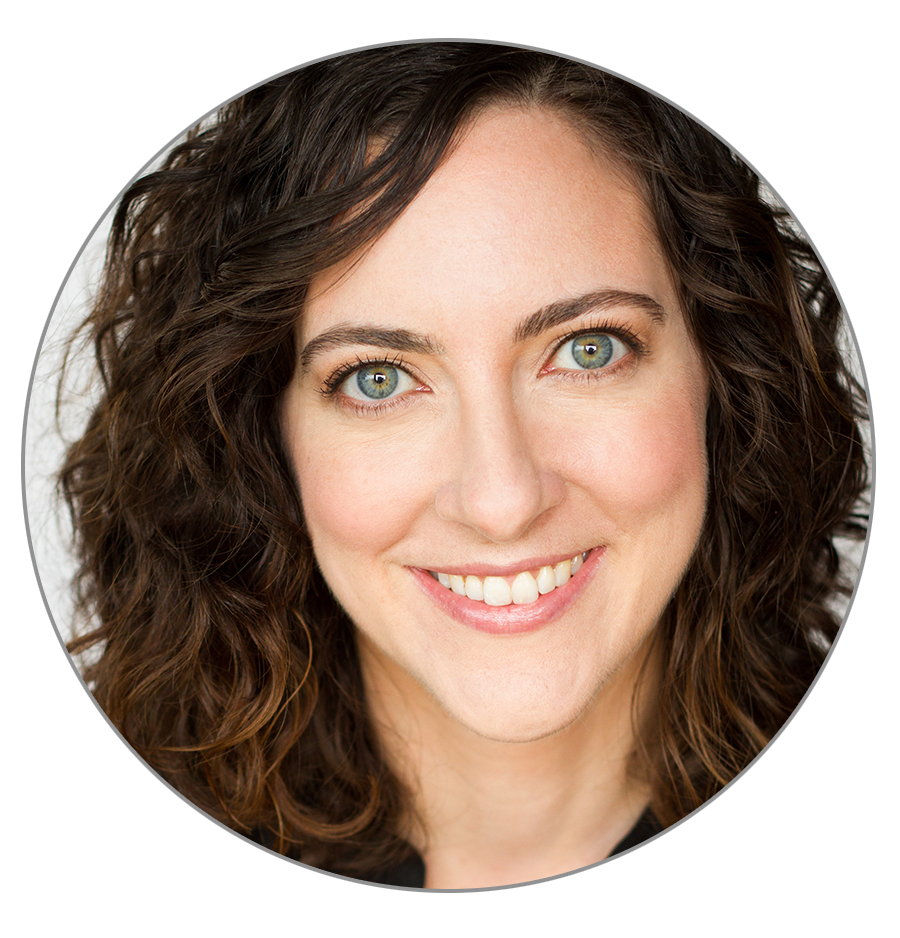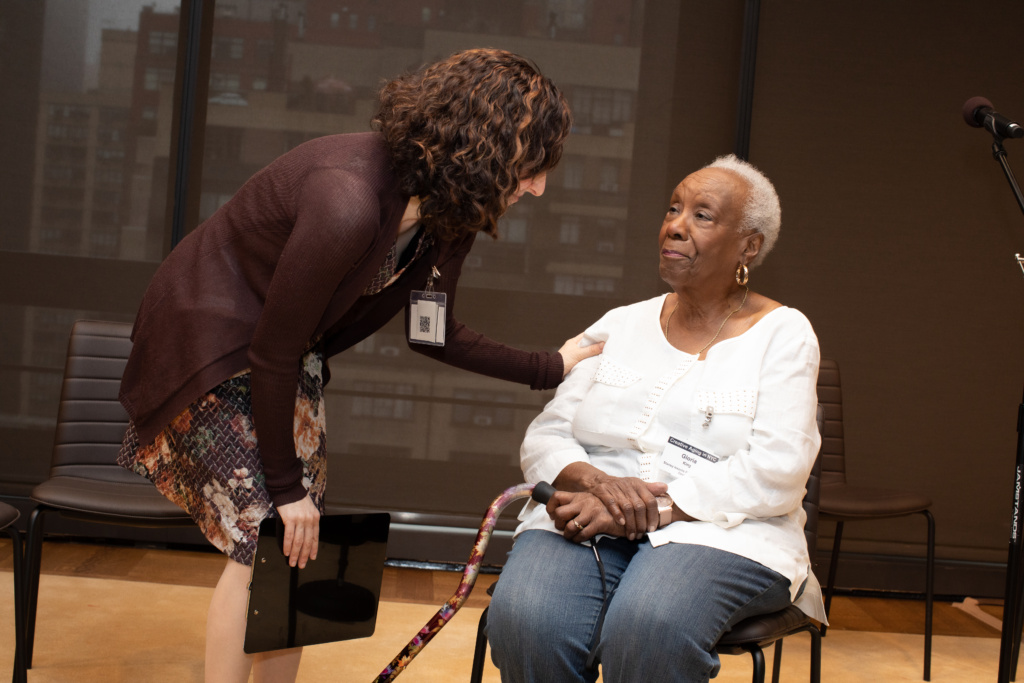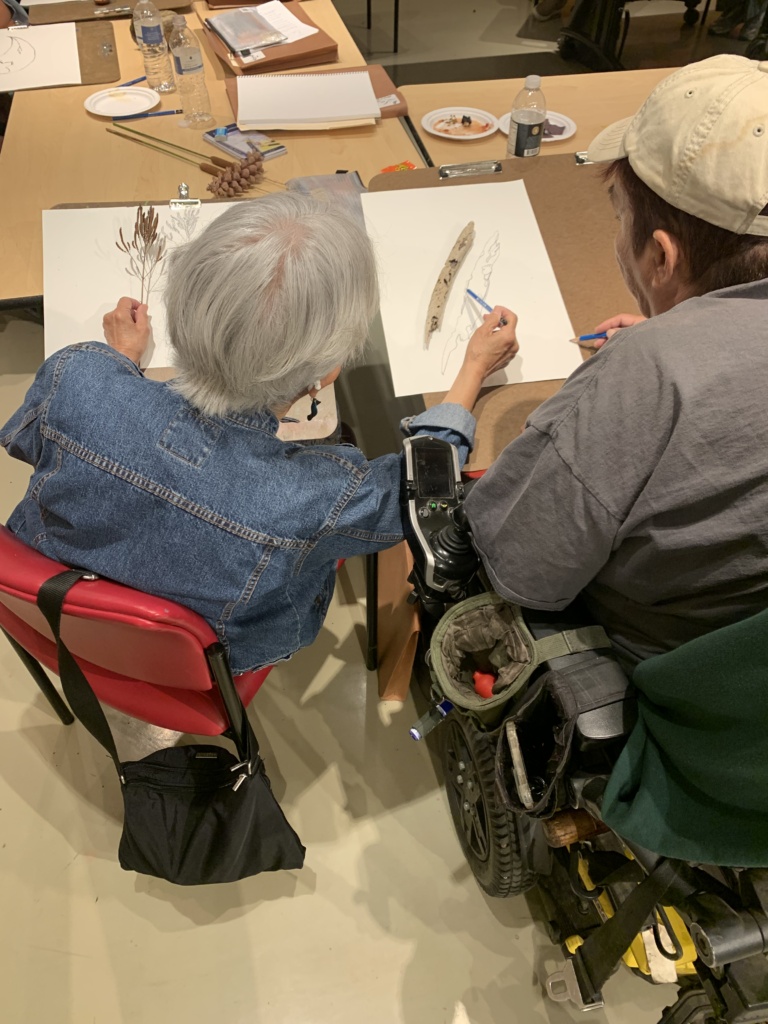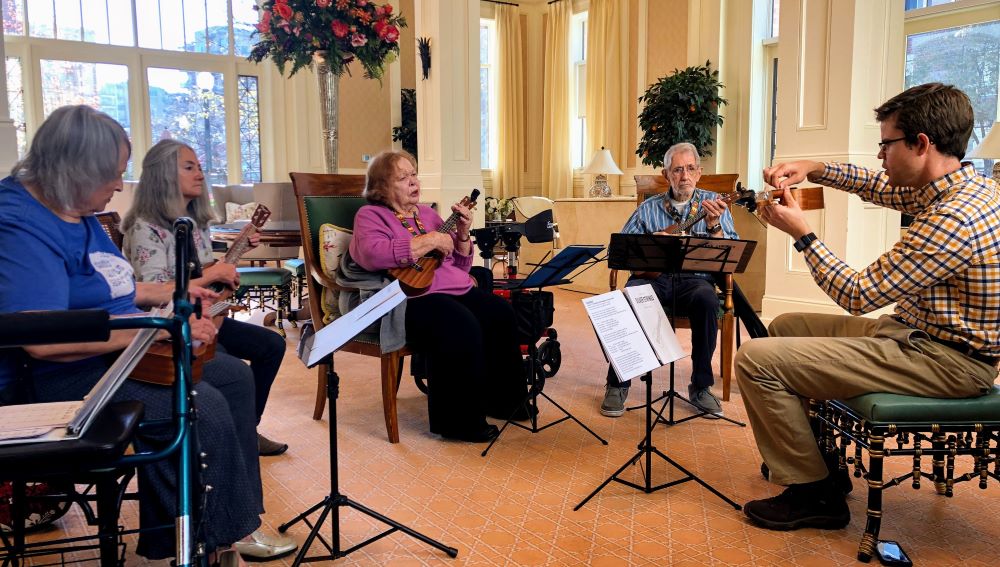In March 2024, Lifetime Arts launched a brand new training course, Inclusive by Design: Engaging All Older Adult Learners. Designed as a follow-up to Creative Aging Foundations, this course enables teaching artists to deepen their practice and helps program leaders ensure creative aging courses are meeting the widest range of older adult needs.
Lifetime Arts’ Director of Education and Training, Julie Kline, shares her thoughts on the inspiration behind the new offering and what potential participants can expect to get out of it.

Why did you decide to expand lifetime arts training offerings to include a course specifically on inclusive design?
In Creative Aging Foundations for Teaching Artists, like all our training courses, our approach is always from a universal design perspective since creative aging programs are open to all in the community. However, because the purpose of that course is to give a broad introduction to teaching sequential creative aging programming, there’s limited time to delve deeper into specific accessibility needs arising ‘on the ground’. Over the years, our partners have requested more guidance on preparing teaching artists to work with students facing challenges that may come up more frequently, such as arthritis or mobility issues, and how that might impact participation in arts programs. We thought the best way to address this was by designing a follow up course that both touches on specific adaptations while training artists to adopt a design perspective on making programs as accessible as possible to all students.
Can you talk a little bit about how your own experience as a teaching artist inspired you?
One of the unique things about Lifetime Arts is that all our trainers, myself included, are practicing creative aging teaching artists. As teaching artists, we’re constantly making adjustments to our plans in response to the students that walk into our classrooms. No matter what our medium, our goal is to empower our students to express themselves in the way that works best for them. Many times, in a class, you are shifting and making decisions in the moment, which can be challenging. This training is a chance to go more deeply into specific examples and approaches, so that when the need for adjustments arise, teaching artists feel confident to handle it well.

Julie works with performer Gloria King on the Acting Out program at Ford Foundation in 2020. Staging decisions that include things like chairs can help a teaching artist ensure the performers can give it their all at a culminating event. Photo by Jeremy Amar for The New York Community Trust.
How can applying the principles of universal design to creative aging education programs help address the intersection of ageism and ableism?
Universal design can help us explore how to make any program or site as accessible as possible for the most people. Most creative aging programs are community based programs, working in partnership with a host organization, like a library, senior center, or arts organization. While we may have some information about the students coming into our classes, we’re never going to know everything ahead of time. In many instances, we know very little about the needs of the group until everybody walks into the room. Applying universal design principles when you’re planning the program enables you to be proactive by ensuring your class is happening in accessible space, you have a variety of tools/materials for multiple needs, and your facilitation plans are inclusive. Working through this process, you’re not assuming anything about a student’s abilities because of age, and you’re not limiting the possibility of full participation based on perceived ability.
A lot of programs approach accessibility by simply asking students in class if they have any particular needs. What is the difference between doing that and inclusively designing a program?
Often, organizations do not have a formal accessibility needs request process. In that case, the onus is put on the student to express their needs in the moment in class. But they might not know what they need if they are interacting with an art form or materials they have never used before. While you can’t plan for everything, you can think through how your activities will be available for all. I am a theater teaching artist; in my class, whenever we do any kind of standing activity, regardless of whether or not folks have mobility assistance, chairs are always available. For anyone who needs or wants to remain seated that day, I’ll show how they can adjust the activity to do in a seated position. In some classes, maybe no one will need a chair, in others some students do. Sometimes a student might not always need a chair, just on that particular day. By making the option open to everybody, students can take the assistance that they might need, and nobody is put on the spot to express a need. It creates a more welcoming environment, and lends much more to artistic skill building by allowing everyone to participate in every activity in the best way they can. Also, by creating this inclusive space where everyone feels welcome from the start, you help to build the social connections that are so core to creative aging programs. There will always be instances when students need to ask for something specific, but proactively planning can minimize the need for that.
What are some key themes and best practices covered in Lifetime Arts training? How can it help teaching artists and education programmers incorporate them into their curriculum and program design?
In our Foundations training, we introduce participants to our S.A.F.E. planning principles. One of these is “Assessment”. We review it briefly in that training, but in this follow up course we spend a lot of time on building that assessment skill, through exploring a lot of different examples in practice. Assessment is crucially important to an inclusively designed creative aging program, where anyone can come through your doors. How do you, as a teaching artist, assess where everybody is at, both in terms of their past experience with the art form and skill-level, and also the barriers that might be coming up for them. What we demonstrate in Inclusive by Design is that assessment should be non-invasive and connected to the art making itself. This is a really important principle demonstrated and discussed in this training.
Can you share a little bit more about what you mean by assessment? What are some of the best practices you’ve seen from your own experience, and others?
When we talk about assessment in creative aging art education programs, we’re not talking about ranking, rating, grading, or measuring someone’s progress. Assessments are short, simple activities at the beginning of a class related to the medium, which help the teaching artist understand where everyone is at on a given day, and what support each student might need. Depending on the art form you are teaching, they’ll look different. In a theater class, I’ll often do what is sometimes called a “clown circle”, where folks say their name and make a gesture that expresses what they’re feeling that day. As we go around the circle, we all mirror each other’s name and gesture. It’s simple and short, but connected to building theatrical skills of physical and vocal expression. At the same time, it allows me, as the teaching artist, to have a quick check in moment with each person, to see where they’re at that day, if something physical is getting in the way, or where their emotional state might be. It’s surprising how much you can learn from a person through this simple activity! In other mediums, an assessment can take the form of a quick drawing exercise, looking together at a piece of art and sharing reflections about it, creating a five minute collage, or many other short activities- anything that will allow the teaching artists to check in with the people in the room and make some mental adjustments to their teaching plan based on how people are showing up.
What are some other topics covered in the course? How might they help build an inclusive class?
It’s really exciting to focus a whole training course on a particular theme- you have so much more time to explore in depth. In the course, participants hear from a gerontologist on some of the specific conditions, diseases, and disabilities that might increase with frequency as we age, and what impact those conditions have. This practical insight can help teaching artists imagine how to best prepare for students with common conditions. We also believe in the importance of centering the voices and needs of the people directly impacted, so participants hear from older adult students themselves about the adjustments and supports that have worked for them in class. This is an illuminating moment for the teaching artists in the training, hearing both the enthusiasm of creative aging students for the work and the real specifics of what folks needed to be able to fully engage in the art form.

Utilizing drawing boards allows students to adjust their work surface to suit their needs. Photo by Julie Bourman, Minneapolis Museum of Art.
Can you speak a little bit about the structure of the training? What can people expect?
Inclusive by Design is a very interactive training experience. Some time is spent in presentations on overriding concepts, such as universal design and a deeper exploration of older adult learning principles, but most of the time is dedicated to panels and small group discussion with other teaching artists. Participants get the opportunity to bring in their own curriculum plans and find where they need to make adjustments in their planned activities, teaching techniques, prep materials, tools, or even culminating event plans. They participate in interactive assessment and social engagement activities across a range of art forms. We take many of the concepts introduced to teaching artists in Creative Aging Foundations and go more deeply into how they apply in real time in classes, making connections with each other, and troubleshooting together.
How does Inclusive by Design integrate with an organization’s overall plan to effectively serve older adults?
Taking our Foundations training is the first step to setting up teaching artists and organizations with the fundamentals of running a great sequential arts education creative aging program. This Inclusive by Design training takes it to the next level, putting the ideas introduced in the first course into practice, arming teaching artists and the organizations that they work in with real-world practical tips to serve the widest range of older adults. Participants will leave with a clear sense of how to make their classrooms and/or organizations a welcoming space for all abilities. It’s the next step to really feel prepared to successfully host these programs in your organization.
We can never prepare for every single circumstance, but we can build the skill to be responsive to the folks that come in the room. That’s what this training aims to do; giving concrete examples and steps that will enable participants to build that responsiveness muscle. Additionally, the special bonus of this training, as I mentioned earlier, is that older adults’ voices are woven throughout. Ultimately, we need to be oriented towards the folks that are being most impacted. For us, that’s the creative aging students.

Want to host an Inclusive by Design training for your team?

